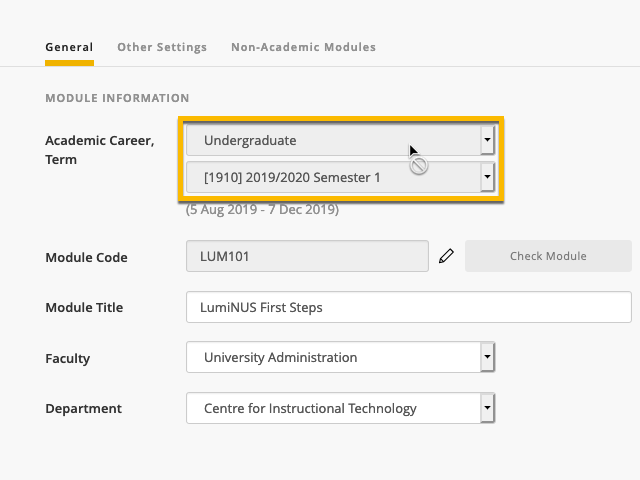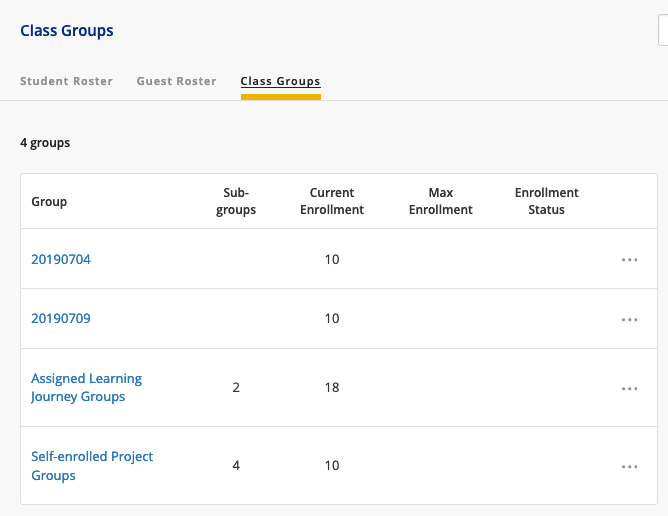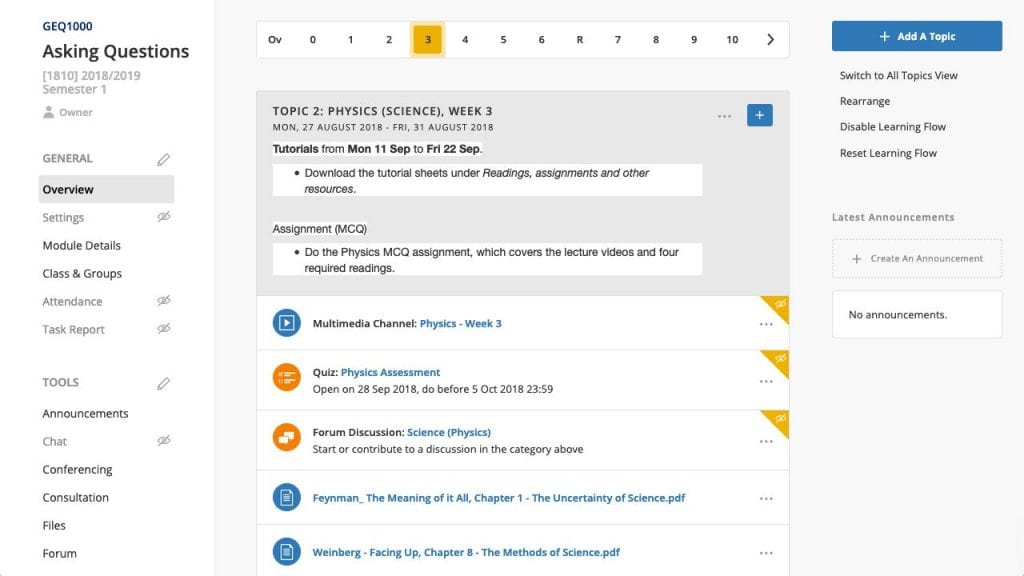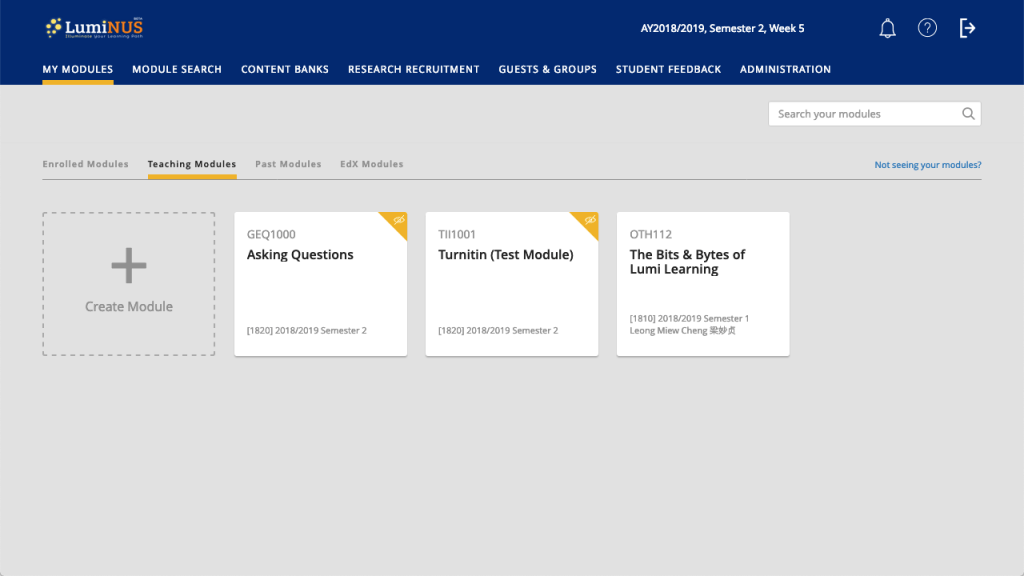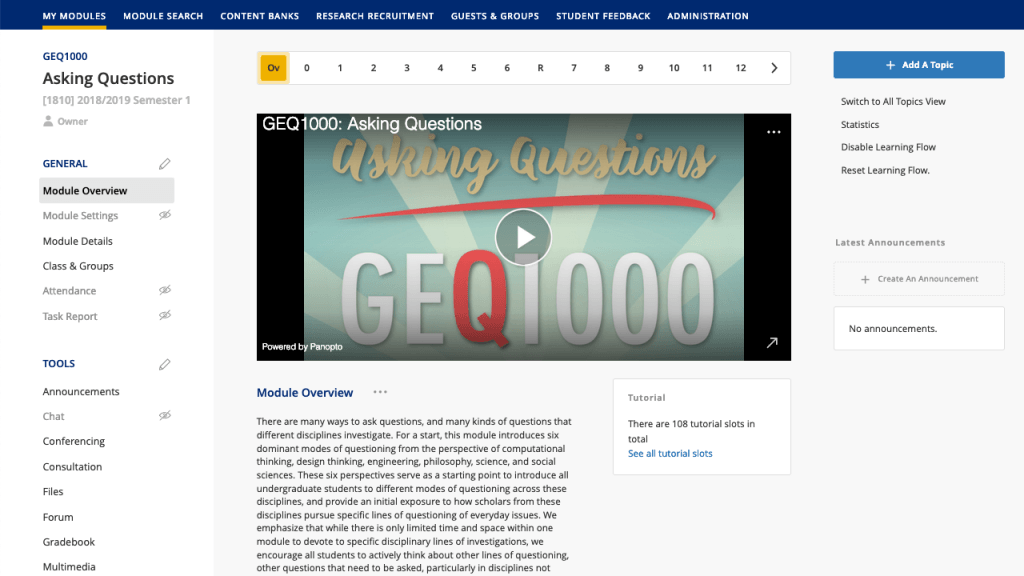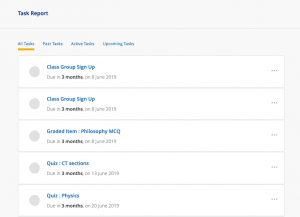While pedagogy has advanced, teachers still need ways of providing content to students. Be it normal or flipped classrooms, students need to prepare by reading and watching content before class. In this edition, we look at the ways you can upload learning materials for your students in LumiNUS.
Files (upload)
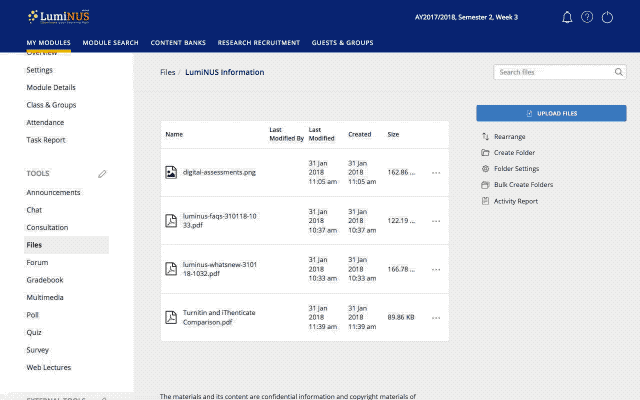
Students download their learning resources from Files. How you make your materials available to students to download remains much the same.
The biggest change is that you can bulk upload in fewer clicks. In the past, you had to click through a single-file upload mode, then a three-file upload mode to get to the massive-upload mode.
Now, you can Ctrl-click (Win) or ⌘-click (Mac) to select many files for bulk upload. And there is an even simpler way: select your files and drag-and-drop them to the folder where you want to place them.
There are a few important changes to Files submission folders. We will cover this in a future edition dedicated to assessing student work in LumiNUS.
Multimedia & Web Lectures
You can choose whether to upload videos to LumiNUS or MediaWeb/Panopto channels. Each channel has its advantages.

LumiNUS channels allow you to include YouTube links. LumiNUS plays YouTube videos inline. So, there no related videos on the sidebar to distract your students. The video’s title and description are auto-added to LumiNUS too.
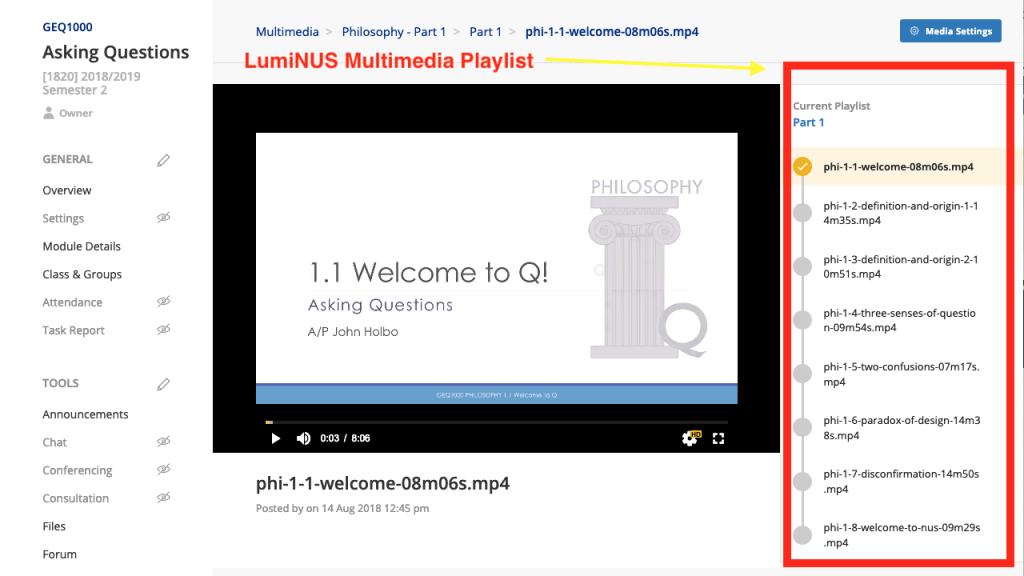
Besides this, you can create playlists in LumiNUS channels. This allows students to watch a series of videos in the order you choose. Playlist videos autoplay, so students can watch a set of videos without interuption. The next video starts immediately after the previous one ends.
Also, you can intersperse YouTube content with your own videos in playlists.
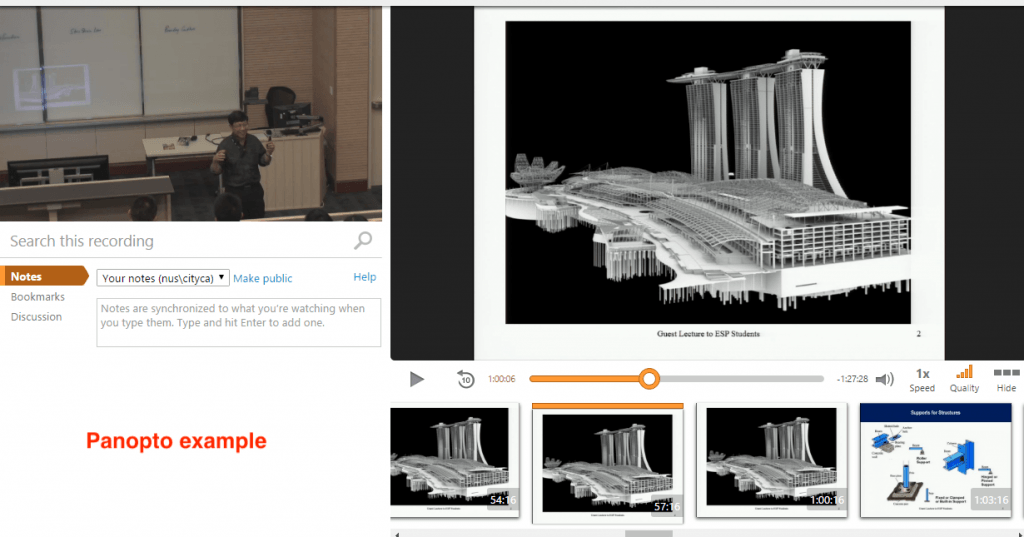
While MediaWeb/Panopto channels do not allow YouTube links, they have other advantages.
First, if you record using Panopto, it indexes your presentation slides and your recorded audio. If you are familiar with Breeze/Adobe Presenter, this is similar. Panopto produces a video which can students can navigate via slide titles and thumbnails.
Panopto also tries to detect text in your presentation slides. This lets viewers search for content in your video. Let’s say your students want to revise a certain concept. All they have to do is search, and Panopto will bring them to the point in the video where the search term appears.
Panopto attempts to do the same with the audio. So, if you mention something, it will hopefully be searchable. “Hopefully” because speech-to-text can be a hit-or-miss affair.
Speaking of Panopto, the same service powers Web Lectures.
You can publish Web Lectures almost immediately after you record them.
The Web Lecture recording process remains the same. Please remember that semester-long Web Lecture recording requests should be made before the start of semester.
Ad-hoc requests also need advance notice, and you must have already booked the venue.
Content Banks
There are two content banks in LumiNUS: Question Bank and Rubric Bank.
The Question Bank allows you to store questions for use in the Quiz and Survey tools.
If you have a large repository of questions in IVLE, you can export them as QTI files. You can import the QTI files into the LumiNUS Question Bank.
The Rubric Bank works with the new Rubric feature in Quiz and Gradebook. You can store rubrics for use when you are marking essay questions and grading assignments. We will cover this new feature in a future newsletter edition on assessing students.
You may be wondering – what happened to the Guest Bank and the Multimedia Bank?
The Guest Bank has been renamed as Guest & Groups. However, this will be discontinued soon since non-NUS accounts creation will be handled by NUS IT.
As for the Multimedia Bank, it has been removed to streamline video workflow. Instead of a manually organised bank, the title of every video you have uploaded to LumiNUS is searchable. Name your videos descriptively and accurately when you upload them. Then, you should be able to find the videos and add them to your module’s Multimedia folder.
